Land Invertebrates
Media

Species Types
Scientific Name
Approx. 175 species in North America north of Mexico
Description
Fireflies are amazing beetles that use “cold light” (bioluminescence) to attract mates. They are commonly seen as they fly and glow in summer evenings.
Media

Species Types
Scientific Name
Nearly 500 species in North America north of Mexico
Description
Soldier beetles are most often seen on flowers. Many species in this family are pollinators. Yellow, orange, and red are their most common colors, besides black and brown.
Media

Species Types
Scientific Name
More than 600 species in North America north of Mexico
Description
The mayflies are a fascinating group of insects. The nymphs live from months to years under water, and the delicate adults fly around in the air, mating, living for only a day or two.
Media

Species Types
Scientific Name
About 85 species in North America north of Mexico
Description
Green lacewings are delicate insects whose larvae are ravenous predators of aphids. This makes the lacewing a friend to gardeners!
Media
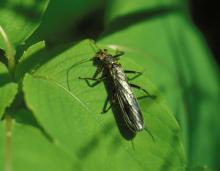
Species Types
Scientific Name
Nearly 700 species in North America north of Mexico
Description
Stoneflies have a lot in common with mayflies, caddisflies, dragonflies, and dobsonflies: They begin life as aquatic larvae, then molt and become winged adults. Many fish find stoneflies irresistible, and anglers know it.
Media
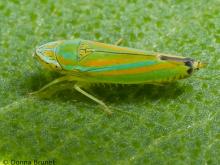
Species Types
Scientific Name
More than 3,000 species in North America north of Mexico
Description
The leafhoppers are a large and diverse family of sap-sucking, hopping insects. You can distinguish them from similar groups of hoppers by the hind legs, which have at least one row of small spines on the hind tibiae (“shins”).
Media
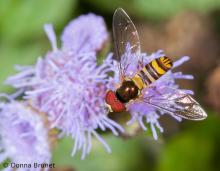
Species Types
Scientific Name
Nearly 900 species in North America
Description
Harmless flies and valuable pollinators, flower flies are incredibly convincing mimics of bees, wasps, and yellowjackets. Recognize them as true flies by their single pair of wings, short antennae, and flylike compound eyes.
Media
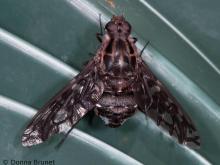
Species Types
Scientific Name
About 800 species in North America
Description
Resembling bees, or sometimes big, fuzzy mosquitoes, bee flies are a family of true flies and are not bees at all. Lacking the ability to sting, their bee mimicry helps them avoid many would-be predators.
Media
Species Types
Scientific Name
More than 1,000 species in North America
Description
Robber flies are aerial predators of a variety of insects. They often perch in conspicuous locations and make short flights chasing prey.
Media
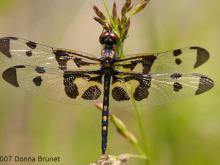
Species Types
Scientific Name
Species in the suborder Anisoptera
Description
Like damselflies, dragonflies have long bodies, two pairs of long, membranous, finely veined wings, and predaceous aquatic larvae. Dragonflies typically hold their wings stretched outward, horizontally.
See Also



Media

Species Types
Scientific Name
Cisseps fulvicollis
Description
The yellow-collared scape moth is more often “orange-collared.” And whether you think it looks more like a firefly or a wasp, it’s still a moth!
Media

Species Types
Scientific Name
Nearly 150 species in North America north of Mexico
Description
Slim, delicate plume moths are instantly recognizable by their T-shaped silhouette, long legs, and muted shades of tan and brown. It can be hard to separate the various species.
Media

Species Types
Scientific Name
Pyrrharctia isabella
Description
Not many people know the adult Isabella tiger moth when they see one, but we’re all acquainted with its caterpillar, the woolly worm, or woolly bear.
About Land Invertebrates in Missouri
Invertebrates are animals without backbones, including earthworms, slugs, snails, and arthropods. Arthropods—invertebrates with “jointed legs” — are a group of invertebrates that includes crayfish, shrimp, millipedes, centipedes, mites, spiders, and insects. There may be as many as 10 million species of insects alive on earth today, and they probably constitute more than 90 percent all animal species.





















